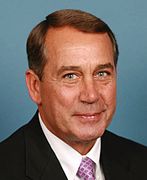| ||||||||||||||||||||||||||||||||||||||||
All 435 seats in the United States House of Representatives[a] 218 seats needed for a majority | ||||||||||||||||||||||||||||||||||||||||
|---|---|---|---|---|---|---|---|---|---|---|---|---|---|---|---|---|---|---|---|---|---|---|---|---|---|---|---|---|---|---|---|---|---|---|---|---|---|---|---|---|
| ||||||||||||||||||||||||||||||||||||||||
 Results: Democratic hold Democratic gain Republican hold Republican gain | ||||||||||||||||||||||||||||||||||||||||
| ||||||||||||||||||||||||||||||||||||||||
The 2008 United States House of Representatives elections were held on November 4, 2008, to elect members to the United States House of Representatives to serve in the 111th United States Congress from January 3, 2009, until January 3, 2011. It coincided with the election of Barack Obama as president. All 435 voting seats, as well as all 6 non-voting seats, were up for election. The Democratic Party, which won a majority of seats in the 2006 election, expanded its control in 2008.
The Republican Party, hoping to regain the majority it lost in the 2006 election or at least expand its congressional membership, lost additional seats. With one exception (Louisiana's 2nd district), the only seats to switch from Democratic to Republican had been Republican-held prior to the 2006 elections. Republicans gained five Democratic seats total, while losing 26 of their own, giving the Democrats a net gain of 21 seats, effectively erasing all gains made by the GOP since 1994.[1] In addition, with the defeat of Republican congressman Chris Shays in Connecticut's 4th district, this became the first time since the 1850s that no Republican represented the New England region.[2][3]
The 10.6% popular vote advantage by the Democrats was the largest by either party since 1982, 26 years earlier, and as of 2022 remains the most recent time that either party won by a double-digit margin in the overall popular vote for the House of Representatives.[4] Turnout increased due to the concurrent presidential election. The presidential election, 2008 Senate elections, and 2008 gubernatorial elections, as well as many other state and local elections, occurred on the same date. This was the first and, as of 2022, the only election since 1980 in which the party of a newly elected president simultaneously gained seats in the House. It was the only time since 1994, and the last time until 2018, that Republicans held less than 200 House seats.
As of 2024, this remains the last election in which Democrats won house seats in Idaho, North Dakota, and South Dakota, the last election in which Democrats won more than one seat in Alabama until 2024, and the last election in which Democrats won a majority of seats in Arkansas, Indiana, Mississippi, Ohio, Tennessee, West Virginia, and Wisconsin. It is also the last time Republicans won a seat in Delaware.
Cite error: There are <ref group=lower-alpha> tags or {{efn}} templates on this page, but the references will not show without a {{reflist|group=lower-alpha}} template or {{notelist}} template (see the help page).
- ^ Barbara Bradley Hagerty & Deborah Tedford (November 4, 2008). "Democrats Poised For Landslide Wins In House". NPR.
- ^ Susan Haigh (November 9, 2008). "G.O.P. a Dying Breed in New England". USA Today. Retrieved April 18, 2014.
- ^ Jon Lender & Mark Pazniokas (November 5, 2008). "Jim Himes Defeats Christopher Shays in 4th District". The Hartford Courant. Retrieved April 18, 2014.
- ^ Enten, Harry (December 26, 2022). "The most underdiscussed fact of the 2022 election: how historically close it was". CNN. Retrieved December 26, 2022.

